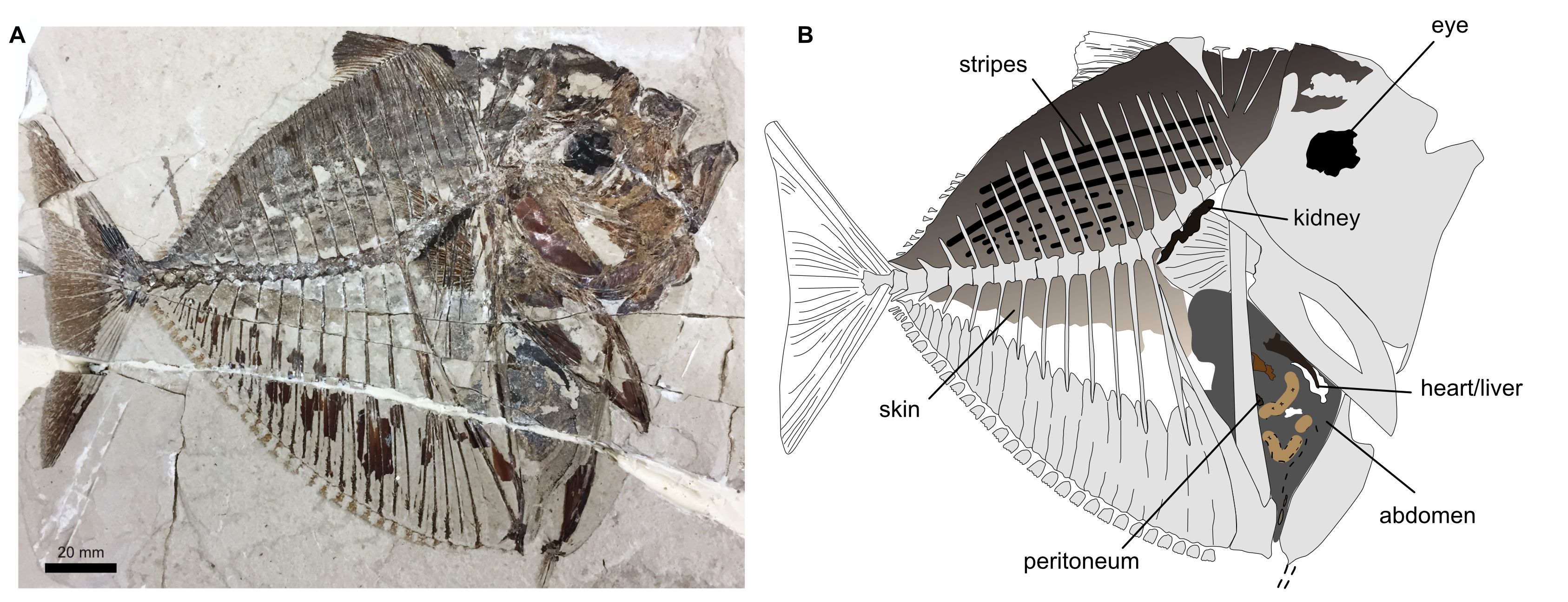News
NEW! Paper in Palaeontology

In this paper Valentina Rossi and colleagues report melanin-based colour patterning in a fossil moonfish from the Eocene Monte Bolca locality from Italy. The specimen reveals that moonfish had different colour patterns to its living counterparts, suggesting a change in ecology from open marine to reef settings and associated changes in diet and in the genes that control colour patterning.
How the moonfish got its spots: 48 million year old fossil fish has unexpected colour patterns
UCC palaeontologists have discovered that fish living in tropical reefs had different colours in the past. This sheds new light on how animals in tropical reefs adapt to changing environments.
The study is led by Dr Valentina Rossi and Professor Maria McNamara with an international team of experts from the University of Turin. The team studied a 48 million year old fossil moonfish from the Bolca fossil locality near Verona in NE Italy. Using powerful microscopes, the team discovered that melanosomes – melanin granules – are preserved in several regions of the body.
Study leader Dr Valentina Rossi says, “This amazing fossil fish preserves the colour pattern of the skin – it had very clear light and dark stripes on its back. These are real colour patterns and not an effect of fossilization because the dark bands contain preserved melanosomes”.
Melanosomes are microscopic features found in the skin, eyes and internal organs of fish (and other backboned animals) that protect against UV damage and strengthen the immune system. “Finding fossil melanosomes tells us about the colour and internal anatomy of the fossil moonfish” continues Dr Rossi.
Remarkably, the ancient moonfish preserves evidence of its last meal – small fish bones. “In modern-day fish, we often see a link between diet, colour pattern and habitat,” says Prof. Carnevale, fish expert and co-author of the study. “The fossil moonfish has stripes head-to-tail across the body. We usually see this in fish that live in the open seas and that eat other fish.” Moonfish today, however, have spots, live in shallow coastal waters near reefs and eat small shellfish and plankton.
Scientists previously thought that the fossil and modern-day moonfish had similar biology because of their similar body shape. The new study shows that the fossil moonfish had a different colour pattern and diet to its modern cousins. “The fossil evidence suggests that over the last 50 million years, moonfish swapped stripes for spots and, at the same time, changed their diet and where in the ocean they lived,” says Prof. McNamara. “These are probably adaptations to changes in the environment and reveal changes in the genes that control colour patterning”.
The study was published today in Palaeontology:
Rossi, V., Unitt, R., McNamara, M., Zorzin, R., Carnevale, G., 2022. Skin patterning and internal anatomy in a fossil moonfish from the Eocene Bolca Lagerstätte illuminate the ecology of ancient reef fish communities. Palaeontology, 65, e12600. DOI: doi.org/10.1111/pala.12600. DOWNLOAD THE PDF HERE: Rossi_et_al_2022_Palaeontology_moonfish.pdf
Figure caption: Mene rhombea (left) and schematic reconstruction of the preserved soft tissues (right)


